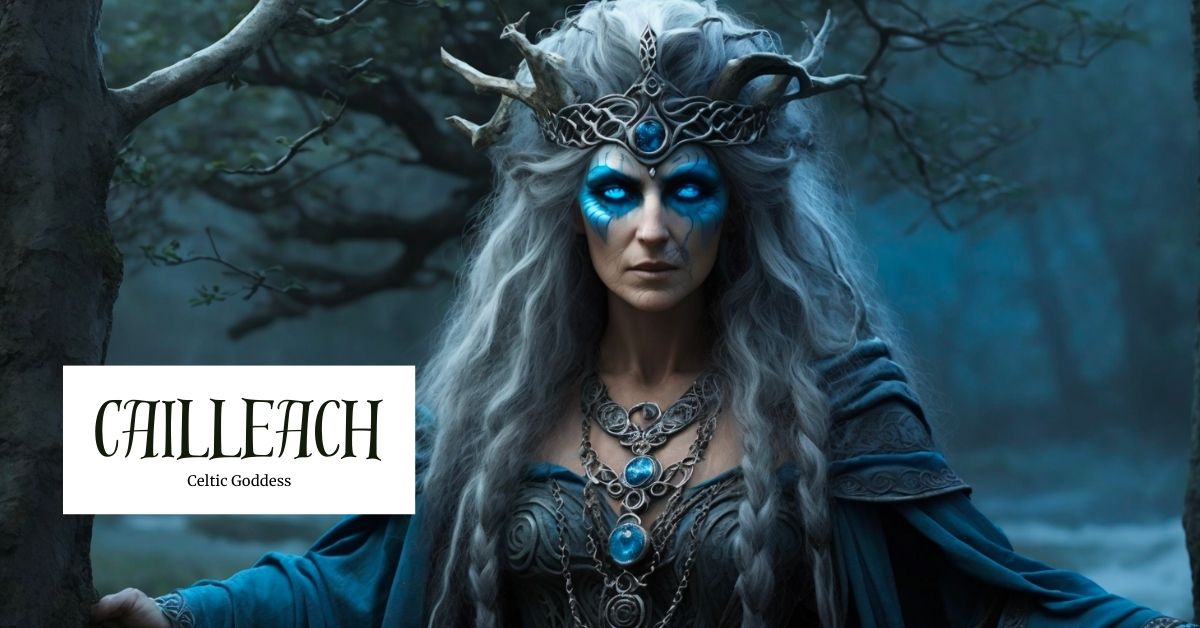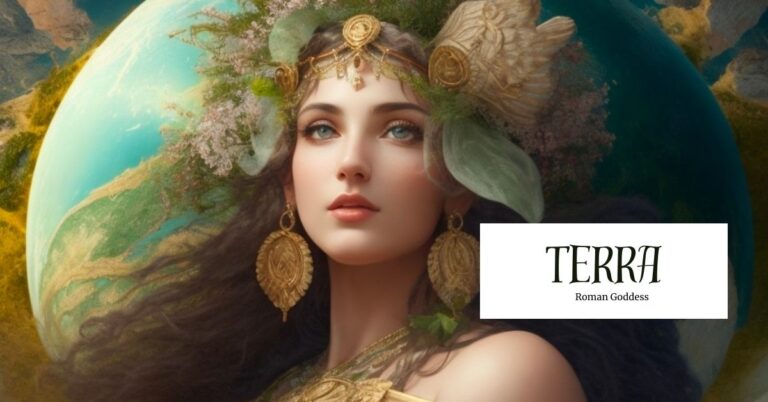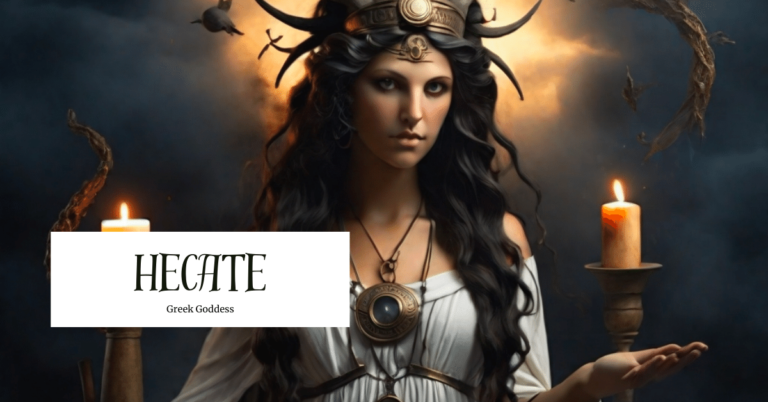Cailleach: Triple Goddess of Wisdom, Transformation and Life
In the ancient mythology of the Celtic people, a captivating figure known as Cailleach reigns as the mysterious and powerful goddess of winter. Shrouded in myth and folklore, Cailleach is the raw and untamed forces of nature. She holds sway over the cold and desolate landscapes during the long winter months. As the days grow shorter and the frost begins to grip the earth, her presence becomes palpable, signaling the onset of a transformative season.
Known by various names across Celtic lands, Cailleach embodies the duality of creation and destruction as well as birth and death. As a divine figure, she stands as a symbol of endurance, wisdom, and the cyclical nature of existence. From her associations with mountains, wild animals, and weather patterns, to her mysterious rituals and tales of her magical cauldron, we unravel the layers of her mythology and explore the enduring legacy of this goddess.
Overview
Cailleach, a revered figure in Celtic mythology, is a multifaceted goddess with deep roots in ancient folklore and traditions. Known by various names such as Cailleach Bheur, Beira, or the Hag of Winter, she is closely associated with the harshness and power of winter.
As the embodiment of the earth’s transformative cycles, Cailleach represents the duality of creation and destruction. She is often depicted as an aged, wise woman, clad in gray or blue, with a weathered face and fierce eyes that show her wisdom and primal energy. Another Celtic goddess depicted as aged is Ceridwen. Cailleach is a guardian of the natural world, commanding the elements and controlling the seasons.
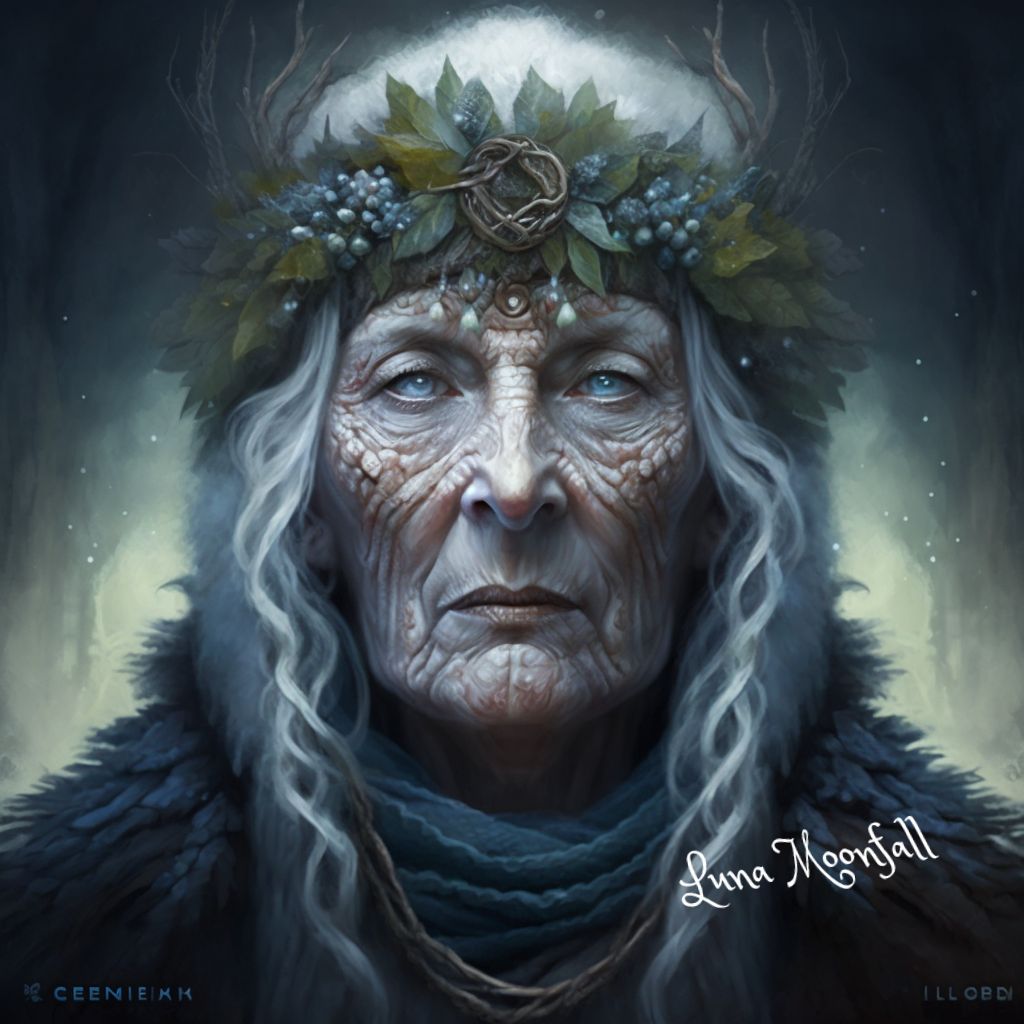
Source: Moonfall Metaphysical
Her influence extends beyond winter, as she is believed to shape the landscape, carve mountains, and control weather patterns. Despite her associations with cold and desolation, Cailleach also symbolizes rebirth and renewal. In some stories, she transforms into a very young woman or maiden in the spring, marking the cycle of rejuvenation and the eternal dance of life and death.
Cailleach’s myths and legends are found across Celtic lands, including Scotland, Ireland, and the Isle of Man, reflecting her enduring importance in the region’s cultural heritage. Today, her influence can still be felt through traditional festivals, rituals, and customs that honor her as a guardian of nature and a timeless symbol of the cycles of existence.
Titles
- Queen of Winter
- Hag
- Old Woman
- Veiled One
- The Hag of Beara
- The Storm’s Hag
Abilities
Cailleach is a prominent figure in Scottish folklore, revered as the goddess of winds, wilderness, and winter. She possesses a wealth of abilities and attributes that make her a formidable and complex deity.
As the personification and queen of winter, Cailleach holds the power to control winter itself. She weaves storms with her sorcery, evoking severe winds and creating landscapes of majestic hills and mountains for Scotland’s terrain. In her triple goddess form, she embodies the maiden, the mother, and the old crone, symbolizing wisdom, transformation, and the cycles of life and death.
Cailleach’s wisdom extends to her role as a fortune teller, possessing ancient knowledge and foresight. She is a powerful ancestor figure, often associated with the protection of wild animals, particularly those with horns, such as stags. In the long winter months, she is believed to be the patron of wolves, safeguarding them and other creatures amidst the harsh conditions.
Legend speaks of Cailleach’s ability to gather souls, drawing a connection to the goddess Morrigan. During the dark winter months, she takes to the sky as a one-eyed crone, leading the wild hunt, where non-magical individuals pursue magical beings. A shapeshifter, she can transform into a giant bird, further exemplifying her supernatural prowess.
Characteristics
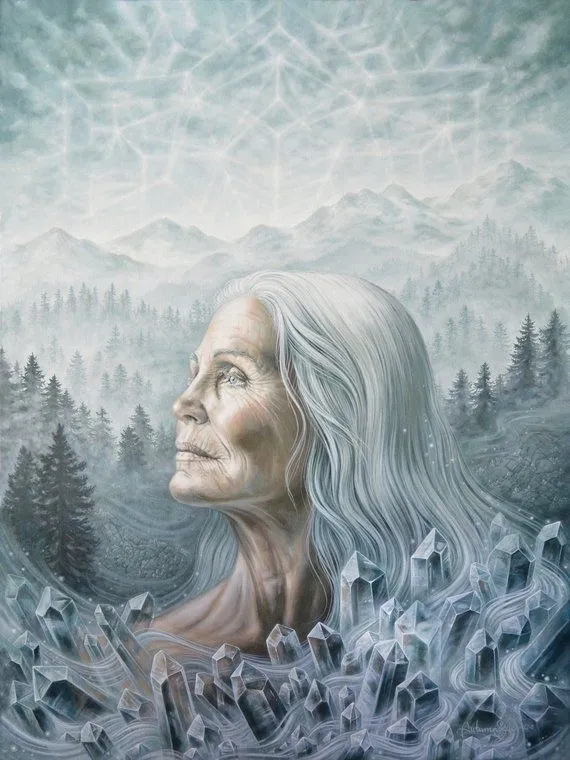
Source: Keeping Her Keys
The physical appearance of Cailleach, the goddess of winter, reflects both her power and her otherworldly nature. Veiled in a shroud of secrecy, Cailleach often conceals her face with a veil. This veil adds to her aura of mystique, hinting at the hidden depths of her wisdom and knowledge. Her long, wild hair cascades down in unruly tangles. A single eye peers out from the center of her forehead, giving her a penetrating gaze that sees beyond the mundane.
Cailleach’s physical appearance is further accentuated by her pale skin, which contrasts starkly with her dark and intense presence. Her skin is as pale as winter itself. Her teeth, reddened in hue, stand out against her pale complexion.
Adorned in clothes adorned with skulls, Cailleach’s attire speaks to her connection with the cycle of life and death. These macabre adornments signify the passing of time and the impermanence of existence, further cementing her role as a guardian of the natural order.
Together, these physical characteristics create an indelible image of Cailleach, a veiled figure with wild hair, a piercing eye, and a pale complexion.
Traits
Her intentions, as depicted in various tales, can vary, reflecting the multifaceted nature of her character.
As a protector, Cailleach assumes the role of guardian, safeguarding the natural world and its inhabitants. She is often associated with wild animals and takes on the responsibility of ensuring their survival during the harsh winter months. Her fierce determination to protect and preserve the balance of nature reveals her nurturing side and her commitment to the well-being of the land and its creatures. In this way, she is reminiscent of Artemis.
However, Cailleach also possesses a formidable and powerful nature. She is known to unleash great storms and invoke long winters, wielding the forces of nature to shape the world around her. These acts, though harsh, are often seen as necessary for the cycles of renewal and transformation that underpin the natural order.
Her wisdom transcends time, allowing her to navigate the intricacies of fate and guide the cycles of life and death. Her enigmatic nature adds to her allure and deepens the reverence with which she is regarded.
Ultimately, Cailleach’s personality traits embody a balance of protection and fierceness, wisdom and unpredictability.
Symbols
The goddess Cailleach is associated with several powerful symbols that reflect her significance and presence within Celtic mythology.
One of the prominent symbols of Cailleach is the ancient stone shrine located at Glen Cailleach in the Scottish Highlands. These stone shrines, known as Tigh Nan Cailleach, are crudely yet carefully constructed stone houses. The surrounding standing stones represent Cailleach herself, alongside her husband Bodach. These shrines serve as physical manifestations of Cailleach, the Celtic goddess of reverence, and provide a sacred space for worship and connection with the goddess.
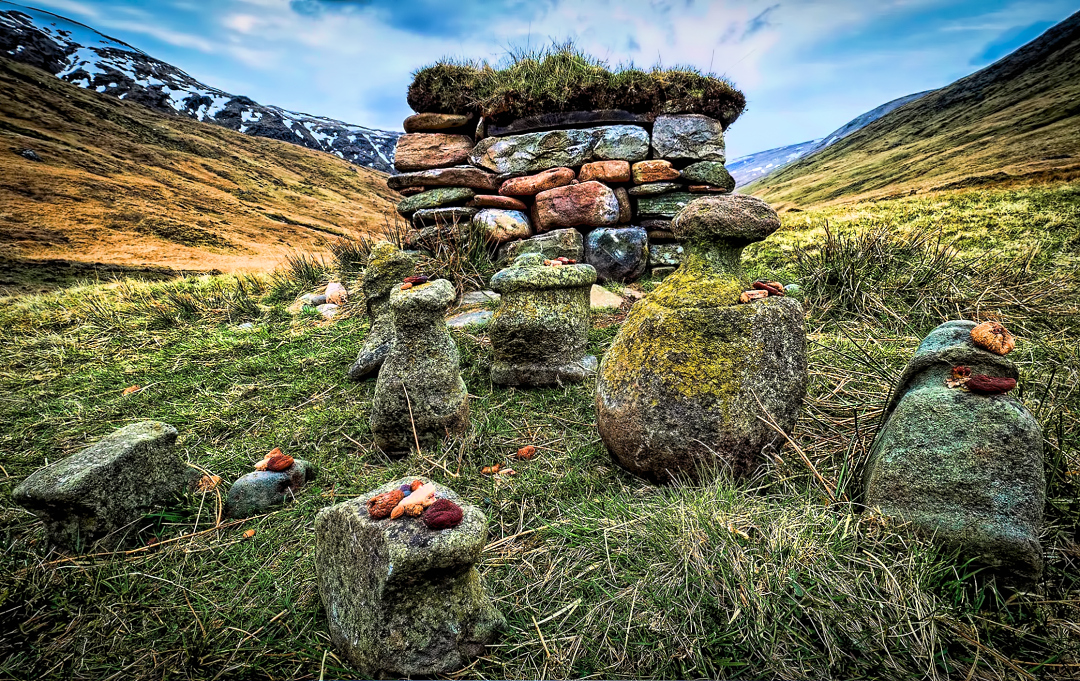
Source: Spooky Scottland
Cailleach’s symbols also stretch into animals such as wolves or horned animals. Horned animals are connected to her through her own physical traits being her one eye. Symbols associated with her goddess abilities can be notices as well. Such as, winter, storms, mountains, and a one eyed crone. Cailleach is connected to cliffs of Moher in County Claire Ireland. She is said to have created them, and they are called “hags or hag’s head”, named after her.
Festivals and rituals
Cailleach, with her deep ties to the natural world and the changing seasons, is associated with several festivals and rituals that hold significance in Celtic traditions.
Samhain, celebrated on the 31st of October and widely recognized as Halloween, holds a special connection to Cailleach. According to Scottish myth, Cailleach would make her appearance on Samhain, often depicted riding a giant wolf in the sky. Using her magical staff, she would tap the ground, causing it to freeze, marking the arrival of winter. This festival marked the transition from the harvest season to the colder months, and Cailleach’s presence symbolized the onset of winter’s grip on the land.

Source: Scotland Shop
Connected to grain and harvest, Cailleach’s influence is observed in the customs of the farmers. The farmer who completed the grain harvest would fashion a corn mother or corn dolly, representing the blue-skinned crone, and toss it into a neighbor’s field if they had not finished their harvest. The last farmer to finish the harvest would be left with the responsibility of caring for the corn dolly throughout the winter until the next planting season. Last to finish in the competition, had to house Cailleach during the winter months.
Imbolc, celebrated on February 1st, also holds significance in connection with Cailleach. According to legend, this day marked the point at which Cailleach would run out of her store of firewood. Each year, she would gather enough firewood to sustain herself through the winter. If February 1st was sunny, it was believed that Cailleach required an additional day to gather more firewood, indicating a prolongation of winter. This day, known as St. Brigid‘s Day in Christianized traditions, served as a marker for the approach of spring and the anticipation of warmer days.
Legends of Cailleach
Legends of Cailleach are heavily intertwined with other celtic folklore tales. Cailleach, the formidable goddess of winter, holds a prominent place in the mythologies of Scotland, Ireland, and the Isle of Man.
Origin Story
Her most prominent title, Cailleach Bhéara, proclaims her as the master of winter. This name reveals her deep connection to the cold season and her ability to shape its harshness. Throughout Scotland, Ireland, and the Isle of Man, she is known by different epithets that reflect the specific landscapes she presides over. For instance, in County Cork, Ireland, she is referred to as An Chailleach Bhéara, also known as “The Hag of Beara.” In Scotland, she is often referred to as “the Storm Hag(s),” emphasizing her association with tempestuous weather patterns.
Cailleach lived in the mist-shrouded mountains, windswept moors, and rugged coastlines of these lands. She emerged as a powerful deity, embodying the raw forces of nature and the untamed beauty of the wilderness. As the seasons changed, she asserted her dominion over winter, summoning storms and weaving frost with her magic.

Source: Owlcation
A Poem for Digde
Though various interpretations and identities have been attributed to Cailleach, one tale speaks of her existence as an eternal crone.
In this legend, Cailleach is the same goddess said to have been known by the name Digde. It is believed that she possessed seven periods of youth, each emerging directly after the previous one, perpetuating her immortality. With each new cycle, she entered into a union with a mortal man, who would grow old by her side and eventually succumb to the ravages of time.
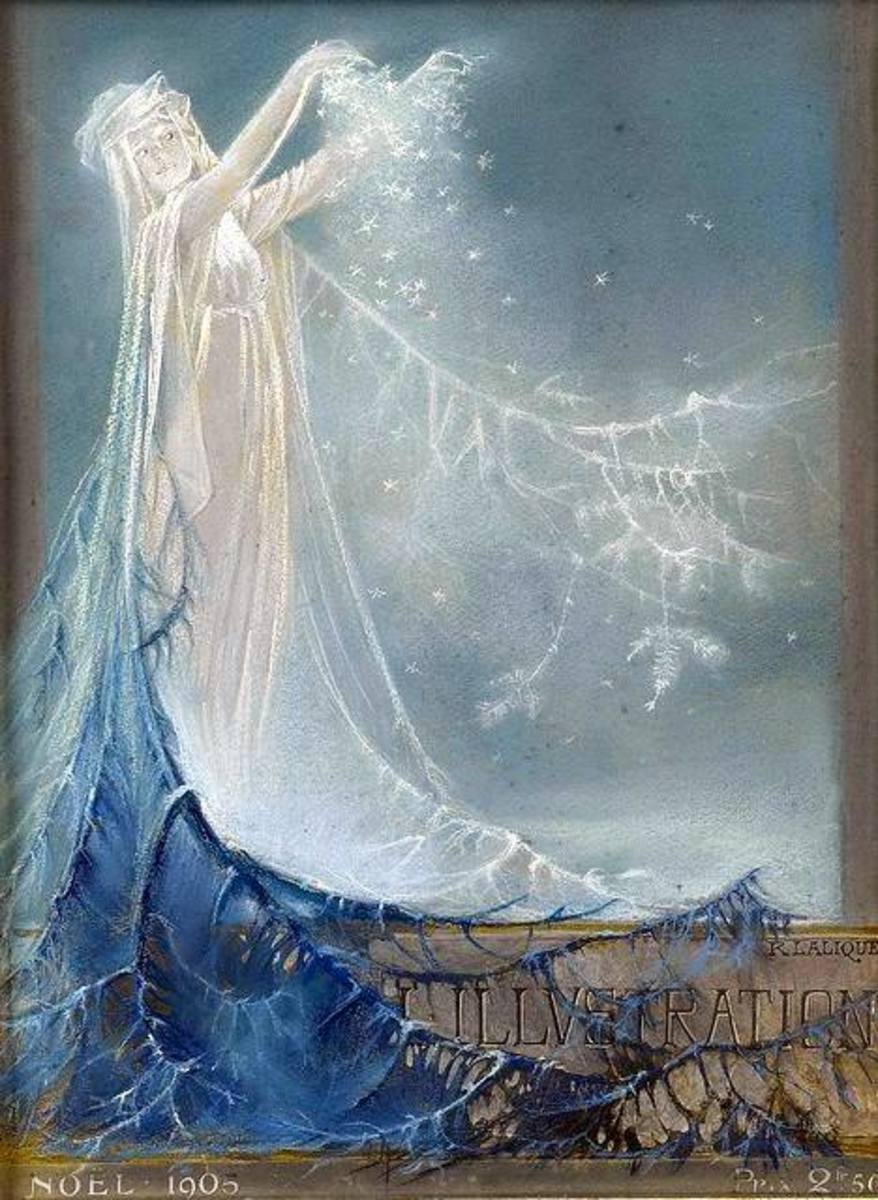
Source: Owlcation
Throughout her vast existence, Cailleach nurtured and cared for fifty foster children, shaping their destinies and guiding them on their paths. These children, a testament to her enduring wisdom and maternal instinct, carried a part of her essence within them, forever intertwined with her ancient presence.
One significant mention of Cailleach can be found in the old Irish poem titled “The Lament of the Old Woman of Beara.” Composed in the ninth or tenth century, the poem serves as a testament to the enduring power and impact of the crone goddess. Within its verses, Cailleach’s story unfolds, capturing the essence of her eternal existence and the profound effects she had on the lives of those she encountered.
Though her true nature remains shrouded in myth and symbolism, the legend of Cailleach echoes through the ages, honoring her as a timeless figure of wisdom, immortality, and maternal care. As the eternal crone, she stands as a guardian of ancient knowledge and the cyclical nature of life itself.
Sisters of the Seasons
In the realm of Celtic mythology, a legend unfolds, intertwining the stories of two powerful goddesses: Cailleach and Brigid. In some tales, these nature goddesses are seen as separate entities, each reigning over distinct periods of the year.
Cailleach, with her dominion over the colder months, presides from the festival of Samhain to Bealltainn, marking the transition from autumn to winter. She harnesses the chilling winds and icy frost, casting her spell upon the land. During this time, her strength and influence are unparalleled.
Brigid governs the summer months, bringing forth warmth, growth, and abundance. Her reign spans from Bealltainn to Samhain, encompassing the blossoming of nature and the flourishing of life. She is the embodiment of light, creativity, and the nurturing power of the sun.
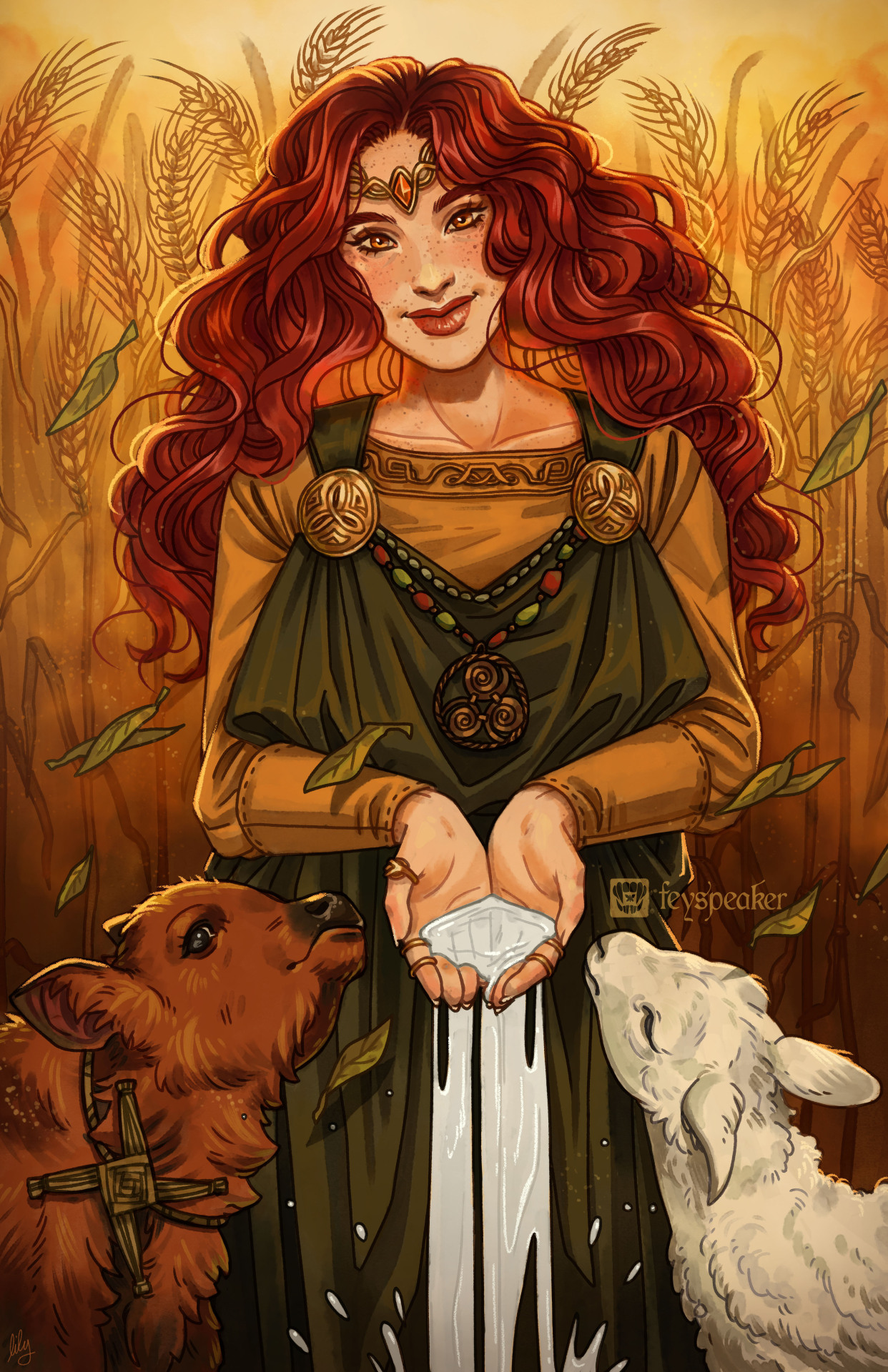
Source: Fey Speaker
While Cailleach and Brigid are often viewed as separate goddesses in these tales, there are instances where their paths intersect and intertwine. In these versions, when the time comes for Cailleach to relinquish her wintry dominion, she undergoes a transformative act. She turns herself to stone, casting aside her magic staff beneath the shelter of a horse or holly bush.
In this legend, Cailleach and Brigid are depicted as sisters, their roles complementary yet distinct. Cailleach’s descent into stone represents a cyclical renewal, preparing the way for Brigid to bring forth the energy and vitality of the summer months.
Modern Appearances
The ancient goddess Cailleach continues to make her presence felt in various modern forms, spanning realms such as literature, film, music, and gaming. These appearances showcase the enduring fascination and reverence for this enigmatic figure.
In the realm of Dungeons & Dragons, a Bheur Hag character takes on the name and appearance of Cailleach. Depicted as a blue-skinned, winter-based hag, this representation pays homage to Cailleach’s association with cold and wintry forces.
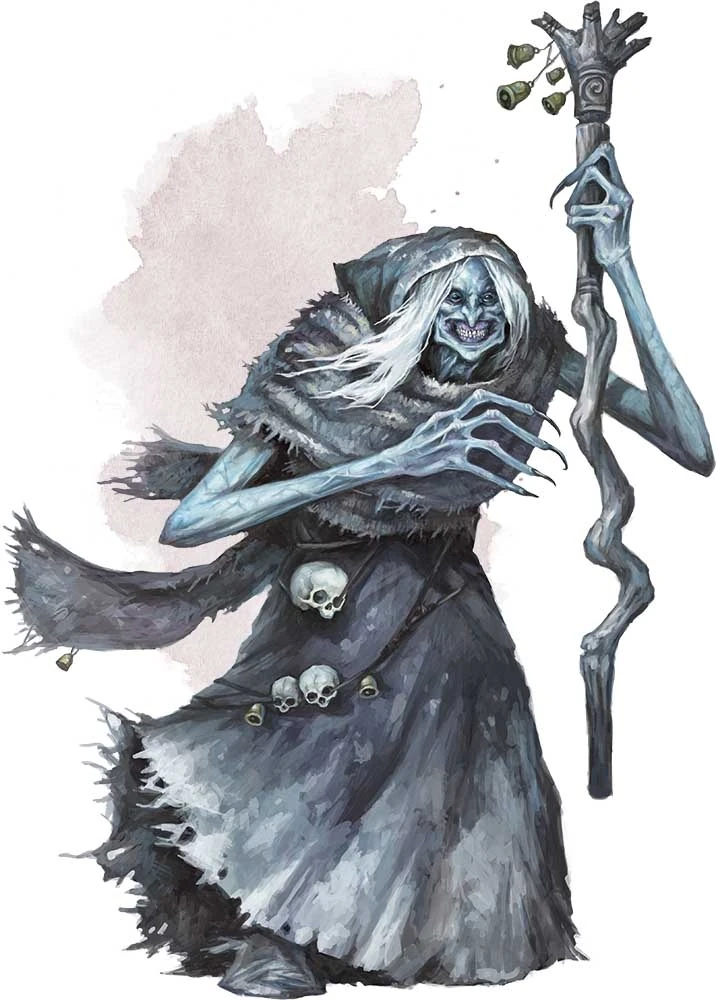
Source: Forgotten Realms
The television series Merlin also features an appearance by Cailleach. When Morgana disrupts the veil between the living and the dead, Cailleach emerges, demanding a sacrifice in exchange for returning the Dorocha to the land of the dead. This portrayal emphasizes Cailleach’s role as a powerful and demanding deity.
The band Crown of Asteria features a song titled “Cilleach: Crone Moon” on their album Crone, showcasing the enduring influence of Cailleach’s image and mythology in the realm of music.
Final thoughts
The goddess Cailleach, with her rich and captivating mythology, continues to intrigue and inspire people to this day. From her origins in ancient Celtic folklore to her modern appearances in various forms of media, Cailleach stands as a powerful symbol of nature’s cycles, wisdom, and the raw forces of winter. Cailleach’s story, passed down through generations in oral traditions, speaks to the timeless fascination with the changing seasons, the harshness of winter, and the intricate dance of life and death
Her associations with storms, landscapes, and the animal kingdom highlight her influence over the untamed forces of nature. Whether as the veiled hag of Beara, the winter goddess in Dungeons & Dragons, or the mysterious figure in film and music, Cailleach’s presence leaves an indelible mark on our collective imagination.
In her ancient presence, we find inspiration to honor and protect the environment, to seek wisdom from the cycles of life, and to embrace the transformative power of the seasons. In the ever-evolving tapestry of folklore and mythology, the figure of Cailleach continues to cast her spell, inviting us to delve deeper into her story and discover the enduring magic and wisdom that she embodies.
Sources
History Cooperative | Cailleach: The Celtic Goddess of Winter

